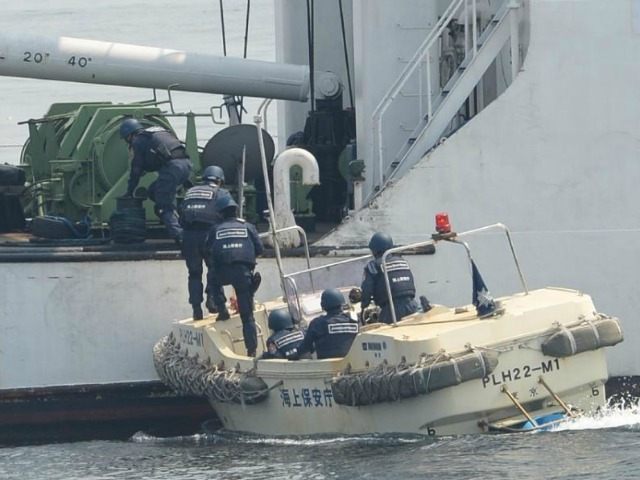Japan is considering joining the United States on surveillance flights in the South China Sea, having already participated in one this week with the Philippines. The disputed waters, which China has claimed almost entirely as its own, have seen significant construction on its reefs by the communist power in the past year, angering its neighbors.
“We don’t have any plans to conduct surveillance in the South China Sea currently but depending on the situation, I think there is a chance we could consider doing so,” Katsutoshi Kawano, chief of the Joint Staff of the Japan Self-Defence Forces (SDF), told The Wall Street Journal this week. As per its post-WWII constitution, Japan does not have an active military per se, but “self-defense forces” which are extremely limited in their ability to act.
Kawano added that Japan has “very serious political concerns” about China’s attempts to reclaim most of the South China Sea, including the Spratly and Paracel Islands, an important commerce route often shared by fishermen of multiple nations. Fishermen from the Philippines and Vietnam have repeatedly complained that Chinese patrol ships have kept them out of waters they have frequented for generations.
In addition to working with the United States, Kawano added that he would like to see his military work with Australia and India in the region.
The United States has responded positively to the public statements. “I view the South China Sea as international water, not territorial water of any country, and so Japan is welcome to conduct operations on the high seas as Japan sees fit,” Adm. Harry Harris, head of the U.S. Pacific Command, said regarding Japanese interest in safeguarding the region. Japan has already begun some surveillance work in the region, however, as a military partner of the Philippines. This week, the Philippines sent a patrol around the region to watch for Chinese ships, with Japanese planes accompanying them.
The Philippines, eager to protect its waters from China, has been extremely welcoming of Japanese forces. In addition to the patrol flights, Japan has been conducting joint training operations with the Filipino military. “We are conducting this exercise to enhance our interoperability, which means once we are joined, we go together,” Philippines Lieutenant Commander Lued Lincuna said of the exercise. The Philippines has also expressed interest in buying Japanese military equipment; unsurprisingly, they appear most interested in purchasing surveillance planes.
While Japan is not a party to the disputes in the South China Sea, the nation is currently embroiled in a disagreement with China over the traditionally Japanese uninhabited Senkaku Islands, located in the East China Sea.
The Chinese government has justified its takeover of the South China Sea in numerous ways, insisting that the seas and the islands belong to Beijing and that construction on the islands will help improve weather reports. China also bizarrely announced earlier this month that the “reclamation” portion of its project on the Spratly Islands will “soon” be complete, and that they would now dedicate themselves to construction on land in which construction has already begun. Chinese officials have yet to fully define the length of time “soon” will encompass.
In addition to concerns from neighboring states and rival powers like Japan and the United States, environmental specialists have cautioned that Chinese construction is destroying an otherwise prosperous ecosystem. “I can’t help but use the phrase overused for forestry … they’ve paved paradise,” explains marine biologist John McManus, who had been working in the South China Sea throughout the Chinese takeover. Multiple reef systems have been destroyed by dredging to create artificial islands, damaging environments teeming with marine wildlife.

COMMENTS
Please let us know if you're having issues with commenting.